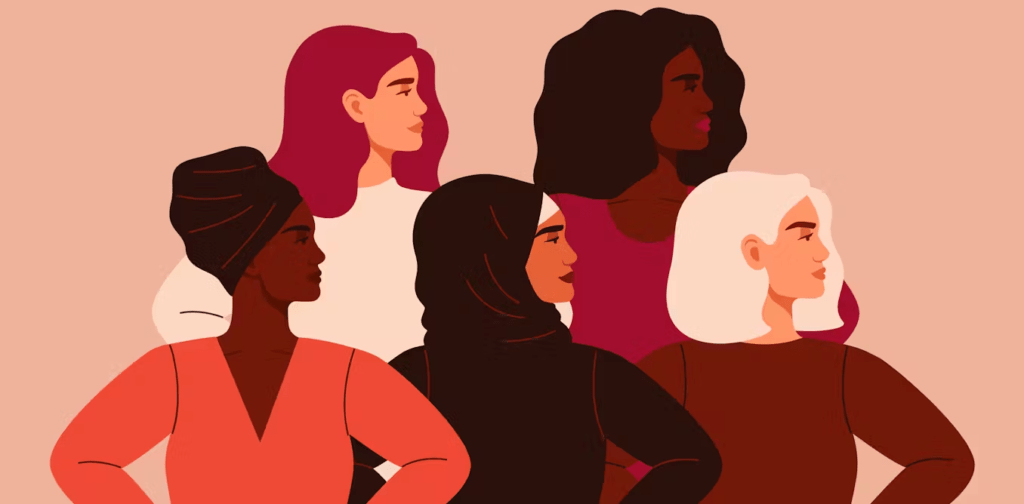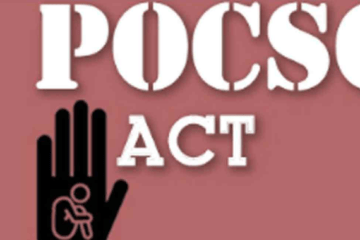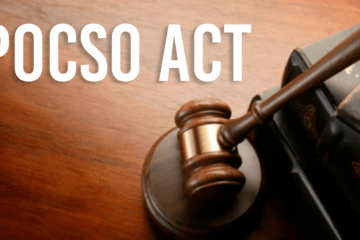
This article is written by R. Siva Shankaran of The Central Law College, Salem of B.A.L.L.B, of 4th Semester, an intern under Legal Vidhiya
ABSTRACT
The concept of intersectionality recognizes how social identities such as race, gender, class, sexual orientation, ability, etc. are interconnected and how their overlaps and intersections create distinct experiences of privilege and discrimination for individuals or groups. It has its roots in feminist theory and emphasizes the value of taking multifaceted approach to examining social issues and promoting social justice. People face multiple layers of marginalization and discrimination in the legal system when looking at the intersections of gender, caste and class in POCSO (Preservation of Sensitive Cases) cases. POCSO addresses a lot of gender-based violence, especially against women and children. However, the experiences and results of these cases are shaped b the intersections of caste and class. Firstly, in many societies, caste is a major factor in determining social status, opportunities, and resource access, because of their social marginalization, people from lower caste backgrounds may experience more discrimination in POCSO cases. When caste and gender discrimination collide, women from lower caste backgrounds who seek justice for gender-based violence may face particular difficulties. Secondly, the experiences in POCSO cases are further shaped by intersections of class, gender, and caste. People from poorer socioeconomic backgrounds might face obstacles like restricted access to financial resources, legal counsel, and social support systems. Economic inequality makes marginalized groups more vulnerable and makes it more difficult for them to successfully navigate the legal system. In POCSO cases, it is essential to consider the intersections of gender, caste, and class in order to address systemic injustices and ensure justice. An all-encompassing strategy that takes into account the intricate social structures and variables that marginalize particular groups is needed to combat gender-based violence. This article delves with the role of gender, caste and class in the POCSO cases and pursuing justice.
KEYWORDS
Intersectionality, Gender, Caste, Class, POCSO, Justice.
INTRODUCTION
Understanding the complexities and subtleties of POCSO (Protection of Children from Sexual Offences) cases requires an understanding of the intersectionality of gender, caste, and class. Girls are disproportionately affected by sexual offences, which highlight the power dynamics rooted in patriarchal structures. Gender plays a central role in this. Another layer is added by caste, since social and economic marginalization frequently leaves caste communities more vulnerable. Girls from tribal and Dalit Communities are especially vulnerable to violence and various forms of discrimination. Gender and caste intersect with class, aggravating inequality even more. Because socioeconomic differences can restrict access to healthcare, education, and legal assistance, marginalized children are more vulnerable to abuse and exploitation. Children who are impoverished may be forced into scenarios like child labor or human trafficking, where they are more susceptible to exploitation. Moreover, the combination of these variables may affect how the criminal justice system views and handles cases. Systemic biases and discrimination may present additional obstacles for marginalized victims when it comes to reporting abuse, obtaining support services, and pursuing justice.
THE CONCEPT OF INTERSECTIONALITY
The idea of intersectionality was first introduced in critical race theory and has since been used in a number of social justice initiatives. It alludes to how social categories like those based on race, gender, class, sexual orientation, ability, and others are interrelated and interact to produce distinct experiences of privilege and discrimination. The phrase was first used in the late 1980s by legal scholar Kimberle Crenshaw to characterize the experiences of Black Women who encounter intersecting forms of discrimination because of their gender and race. But since then, the concept of intersectionality has grown to acknowledge that people can be subject to multiple levels of privilege and oppression depending on different facets of who they are.
The concept of intersectionality highlights how social categories don’t exist in a vacuum; rather, they intersect and interact with one another to complexly shape people’s opportunities and experiences. For instance, a person’s experience of discrimination may be impacted by their gender and/or race alone as well as by the ways in which these identities interact with other characteristic like class, sexual orientation, or disability. In order to address systemic injustices and advance social justice, it is imperative to comprehend intersectionality. It draws attention to the necessity of developing inclusive strategies that take into account the complexity of human experiences as well as the special experiences and difficulties faced by people with intersecting identities. Intersectionality in POCSO cases prompts us to take into account how victim experiences are shaped by the intersections of caste gender and class and how these influences affects victim’s access to justice and support service.
GENDER, CASTE, AND CLASS INTERSECTIONALITY IN POCSO
Social factors like caste, class, and gender can be important in the context of Prevention of Children from Sexual Offences (POCSO) Act cases, this is an explanation.
GENDER INTERSECTIONALITY IN POCSO
Gender I not experienced in a vacuum; rather, it intersects with other social identities like caste and class, as highlighted by intersectionality. Dalit girls, for instance, may experience additional discrimination because of their caste and gender, which leaves them more susceptible to sexual assault. Addressing the particular difficulties encountered by various victim groups requires an understanding of how gender intersects with other variables.
- Victimization: In POCSO cases, victim identity is often determined by gender, with girls constituting the majority of victims. This is indicative of larger patter of power and vulnerability in society, where girls are disproportionately the targets of sexual offences.
- Perceptions and Stereotypes: Stereotypes based on gender can affect how people view both offenders and victim. Biases in society might influence the degree to which accusations are taken seriously or the way in which victims are handle according to their gender. For instance, there might be beliefs or victim-blaming attitudes that are aimed at male victims.
- Access to justice: Victims’ access to justice may be impacted by their gender. Fear of shame, stigma, or reprisals can prevent girls and women from reporting abuse. Furthermore, male victims of sexual offences may be discouraged from coming forward by societal expectations regarding gender roles.
- Legal Processes: Legal proceeding may also be impacted by gender dynamics. Law enforcement officers, solicitors, and judges may have unconscious prejudices that influence their judgment. This may have an effect on how cases are handled, how harshly penalties are applied, and how justice is generally pursued.
CASTE INTERSECTIONALITY IN POCSO
The concept of intersectionality highlights the complex ways in which victimization can result from the intersection of caste-based discrimination with gender and class. Victims from castes that are marginalized may encounter additional obstacles to obtaining justice, such as prejudice or a lack of support from authorities or their communities. Addressing the unique needs of victims form marginalized caste requires an understanding of how caste intersects with other factors.
- Power Dynamics: The dynamics of abuse may be influenced by power structures based on caste. Knowing that children from marginalized castes are less likely to receive support or protection, perpetrators from dominant castes may take advantage of their social and economic power to victimize them.
- Access to Justice: Discrimination based on caste may affect victims access to justice. Children from castes that are marginalized may encounter additional difficulties in reporting abuse, such as fear of reprisals or skepticism form officials who might harbor prejudices against them.
- Social stigma and Silence: Social stigma based on caste may prevent victims from reporting abuse, particularly if the abuser belongs to a higher caste. If victims report the abuse, they might fear reprisals from influential caste-based networks or social exclusion.
- Intersectionality: When caste interacts with other variables like gender and class, victimization can take on complicated forms. Dalit, for instance, may experience additional discrimination because of their caste and gender, which leaves them more susceptible to sexual assault.
- Legal Processes: Caste biases may also affect the handling of POCSO cases within the legal system. Discriminatory attitudes among law enforcement officials, judges, or other stakeholders can influence how cases are investigated, prosecuted, and adjudicated.
CLASS INTERSECTIONALITY IN POCSO
The concept of intersectionality emphasizes how a person’s socioeconomic status interacts with other social identities to influence their experiences of victimization and ability to access the legal system. It may be difficult for kids from poorer socioeconomic backgrounds to get support services, competent legal counsel, and legal resources. Comprehending the ways in which class, gender, and caste intersect is essential to creating inclusive strategies that cater to the needs of all victims, irrespective of their financial status.
- Access to Resources: It may be difficult for children form poorer socioeconomic backgrounds to get access to legal resources like support services or competent legal counsel. Limited financial resources may make it more difficult for them to seek justice and compensation for the abuse they have endured.
- Vulnerability: Children from low-income families are frequently more susceptible to abuse and exploitation. They are more likely to become victims of sexual offences if they live in substandard housing, are exposed to unsafe environments, or have their parents disappear because of financial strain.
- Exploitation and Trafficking: Due to their apparent vulnerability and lack of protection, children from low-income families may be the target of sexual exploitation and human trafficking. Traffickers may use their financial hardship as leverage to force victims into abusive circumstances.
- Access to Education and Awareness: Socioeconomic status can impact access to education and awareness about rights and protection against sexual abuse. Children from lower-income families may have limited access to information and resources that could help them recognize and report abuse.
- Perception and Treatment by Authorities: Socioeconomic status can influence how victims are perceived and treated by authorities within the legal system. Bias or discrimination based on class may affect how seriously allegations are taken and the level of support and empathy provided to victims during the investigation and legal proceedings.
MAJOR CASES IN INDIA ON CASTE INTERSECTION WITH POSCO:
Recently, three incidents that involved complex questions about how the criminal justice system intersects with caste oppression namely, the regime to protect children from sexual offences occurred in Delhi, the capital city of India, within days of one another. These incidents highlight the issue that laws intended to combat sexual violence might not take into consideration the enduring complexity of caste, which would make it impossible to guarantee full justice.
Firstly, a nine-year-old Dalit girl was brutally raped and killed inside a crematorium by a group of four men, one of whom was a temple priest. The four defendants are being looked into for possible charges of murder, rape, and offences against the Prevention of Atrocities against Scheduled Caste and Schedule Tribes Act, 1989 (PoA) and applicable section of the Protection of Children from Sexual Offences (POCSO) Act, 2012.[1]
In the second instance, a Delhi sessions court cleared a Dalit man of POCSO charges; the man had already served six years in jail. The court concluded that the man had been falsely implicated by his parents because of a “prejudicial disposition” resulting from his caste. Additionally, the court gave him a compensation of one lakh.[2]
In the third incident, the people who had hired the 13-year-old Dalit girls as a domestic worker raped and killed her. In addition to charges of murder and criminal conspiracy, the accused have also been charged under the Prevention of Atrocities against Scheduled Caste and Schedule Tribes Act, 1989 (PoA) and the Protection of Children from Sexual Offences (POCSO) Act, 2012.[3]
The three incidents are different in specifics but agree on the caste issue, the other incident shows how a strict law likes the Protection of Children from Sexual Offences (POCSO) Act, 2012 can be abused to inflict caste-based oppression. The two incidents of sexual abuse of Dalit girls are indicative of the use of sexual violence as a tool of caste oppression.
CONCLUSION
Gender, caste, and class intersectionality are important factors in cases involving the Protection of Children from Sexual Offences (POCSO) Act. Gender biases frequently affect how cases are viewed, looked into, and decided; girls from underprivileged caste and class backgrounds are particularly vulnerable to discrimination. Because of their overlapping identities, power disparities are exacerbated, which results in systemic barriers to receiving support and justice. Social and economic barriers can be further reinforced by marginalized caste and class backgrounds, which can also make it more difficult to access legal resources and increase stigma in society. Thus, it is imperative to address the intersectionality of gender, caste, and class in order to guarantee all children, especially those from marginalized communities, equitable treatment and legal protection. An intersectional lens must be used in the fight against gender-based violence in order to address the complex issues that vulnerable people encounter within the parameters of the POCSO Act.
REFERENCES
- Mansi Verma, Caste intersections with POCSO, Leila Seth, 10 September, 2021, https://leilaseth.org/caste-intersections-with-pocso/
- The Protection of Children from Sexual Offences (POCSO) Act, 2012, No.32, Act of Parliament, 2012 (India)
- The Scheduled Caste and Scheduled Tribe (Prevention of Atrocities) Act, 1989, No 33, Act of Parliament 1989 (India)
- Kimberle Crenshaw, Intersectionality, Identity Politics, and Violence against Women of Color, Jstor.org, (21 July, 2010, 14:45), https://www.jstor.org/stable/1229039
[1] Bismee Taskin, 9-year-old Dalit girl ‘gang-raped’ in Delhi and ‘forcibly cremated’, legs & ashes only evidence, The Print, 03 August 2021, 03:28 pm IST, https://theprint.in/india/ 9-yr-old-Dalit-girl-gang-rape- in-Delhi-priest-and-3-others-forcibly-cremated-her/708357/
[2] Anand Mohan J, Delhi court acquits man in POCSO case, says framed for being Dalit, The Indian Express, 13 August, 2021, 07:15 IST, https://indianexpress.com/article/cities/delhi/delhi-court-acquits-accused-sexually-exploiting-kids-pocso-708357/
[3] Jignasa Sinha, 13-year-old Dalit girl from Delhi raped, killed; landlords kin held, The Indian Express, 31 August 2021, 10:43 IST, https://indianexpress.com/article/cities/delhi/13-year-old-Dalit-girl-from-Delhi-raped- killed-landlords-kin-held-7479159/
Disclaimer: The materials provided herein are intended solely for informational purposes. Accessing or using the site or the materials does not establish an attorney-client relationship. The information presented on this site is not to be construed as legal or professional advice, and it should not be relied upon for such purposes or used as a substitute for advice from a licensed attorney in your state. Additionally, the viewpoint presented by the author is of a personal nature.




0 Comments